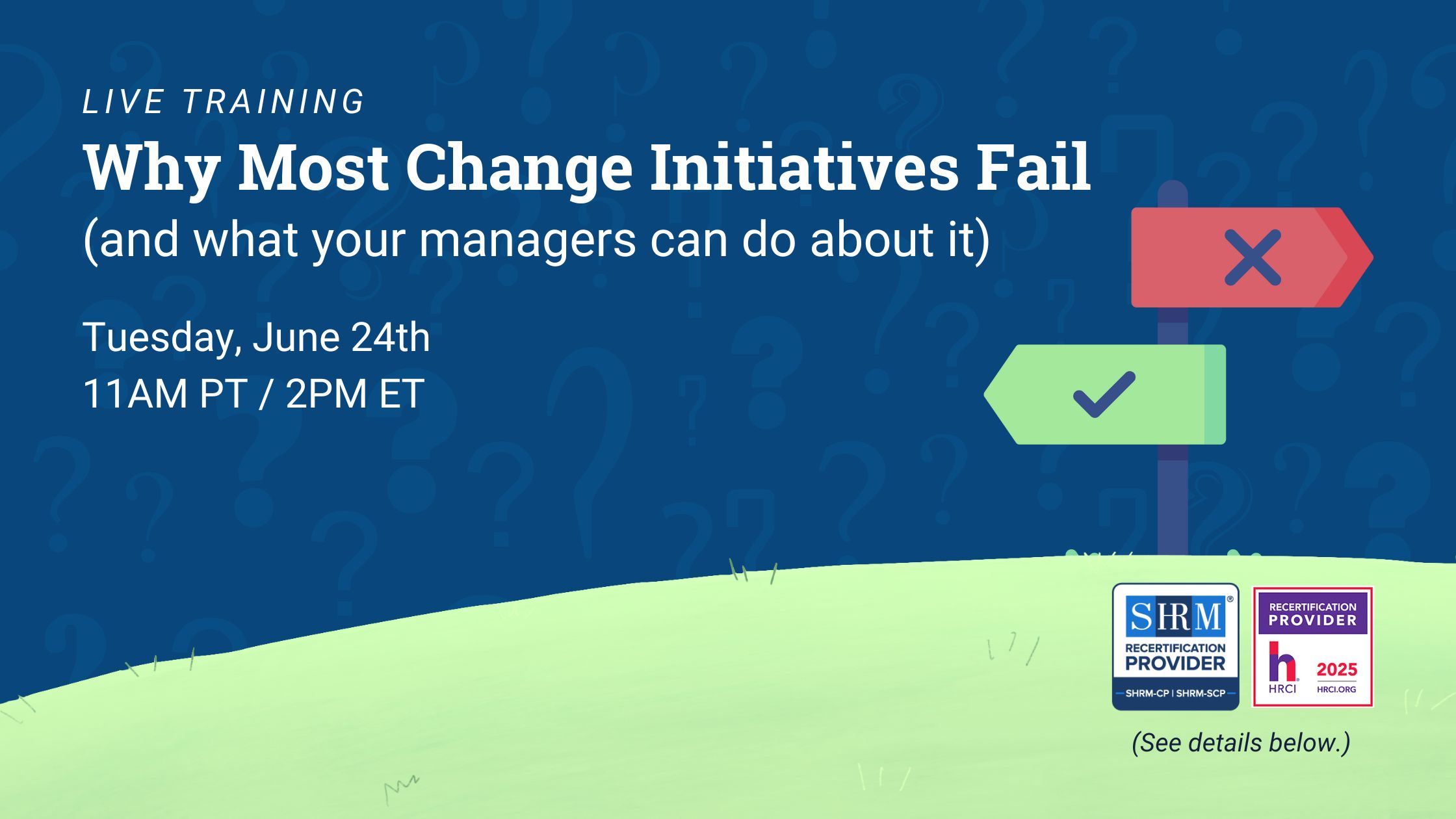Terminated vs Laid Off. Discover the best way to tackle these challenging HR conversations.
Terminated vs laid off. These words and phrases relate to a break in the employee-employer relationship, but mean very different things to both the company and the departing employee—legally, financially, and emotionally.
While employees who have been terminated vs laid off from a job might say they’ve been fired by their company, HR professionals know this isn’t always an accurate description. Termination is a broad term that simply means the employee-employer relationship has ended. A termination can be voluntary or involuntary. The former is when the employee makes the choice to end their employment—to retire, to pursue another job, or for other reasons. An involuntary termination, in contrast, is when an employer ends the relationship by laying off or firing the employee.
If an employee is fired, the fault for the termination rests with the employee—whose job performance or behavior has fallen short of company expectations. In contrast, if an employee is laid off, the employee isn’t considered at fault but rather a victim of the consequence of a larger company decision, such as a downsizing or restructuring.
While the process for both types of terminations have much in common, there are key differences to keep in mind to mitigate legal trouble, protect employer brand, and ensure exiting employees are treated with compassion and kindness.
Having trouble distinguishing between the terms terminated vs laid off? Learn first about the differences in the processes for firing versus laying off an employee, then read about the outboarding procedures common to both types of involuntary terminations.
When Firing an Employee
When approaching someone who has been terminated vs laid off, it’s important to consider their state of mind. Even if an employee is underperforming, don’t blindside them with a sudden pink slip. While at-will employers are technically allowed to fire employees without giving a reason, doing so can open you up to lawsuits and damage your employer brand. It’s also just an unkind move.
Let employees know well in advance if their performance isn’t meeting expectations, and allow them fair chances to improve. If you have procedures outlined in employee handbooks or contracts, make sure to follow them to the letter, documenting every step of the process. Your warnings should come with clear expectations for improvement and a timeline with which to achieve them, so that if the employee is in the end called in to be fired, this final step should come as no surprise.
If, in the end, you still need to fire the employee, gather all the materials you’ve collected on performance issues. At the termination meeting, CNN recommends you “have specific examples and bring the proper documentation,” such as copies of performance reports and write-ups.
When Laying Off an Employee
When planning layoffs, it’s important to first establish business goals for the reduction in force—and consider if those goals might be met without taking the difficult step of laying people off. Should your company decide a layoff is absolutely necessary, you’ll need to go through a layoff selection process, establishing criteria to determine which positions will be affected.
If you’re a larger company, you must comply with the Worker Adjustment and Retraining Notification (WARN) Act, which stipulates that companies with 100 or more full-time employees must give written notice 60 days before the date of a mass layoff. Some states have more stringent requirements, so check with your state department of labor. If your workforce includes unionized workers, you also need to make sure you fulfill any contractual obligations to bargain with the union.
Layoffs—especially those involving a sizable portion of your workforce or the closure of a company branch—can be a complicated process with many moving parts. To keep track of all the guidelines and considerations, download INTOO’s Reduction-In-Force Checklist, which outlines the 16 steps to successfully managing a reduction-in-force.
When Terminating an Employee (Both Layoffs and Firings)
Terminated vs laid off, it shouldn’t matter. Whether the employee is being laid off or fired, you want to make sure the employee is treated fairly and empathetically in all steps of the offboarding process. You also want to make the transition as painless as possible for the employee, yourself as the HR professional, and the company. Thus, the recommended steps for both types of involuntary terminations have many similarities. Here are important processes to follow for your termination meeting:
Decide where, when, and with whom.
Experts differ on which day of the week is best for a termination meeting, because the needs of individual people and companies differ widely. Harvard Business Review recommends that you “plan the transition so as to do the least damage to company and coworkers.”
In general, this means having the meetings at the end of work day. “Consider firing the employee after your other employees leave,” writes Mike Kappel, founder and CEO of Patriot Software, in Forbes. “That way, the terminated employee does not need to leave your office (or wherever you fire them) in front of their co-workers.”
Pick a private, neutral place for the meeting, such as a conference room. In general, the meetings involve three people: the affected employee, the employee’s manager, and an HR professional. If you suspect the employee might get angry or violent, consider also having security personnel in the room.
Deliver the news quickly and clearly.
Once you’re all at the termination meeting, don’t make small talk. Quickly let the employee know that they are being terminated, and give a clear and honest reason for the termination. Then give the employee a written statement reiterating this news, whether it’s a notice of layoff or a firing.
After you’ve broken the news, you can go into housekeeping specifics, such as when their last day of employment will be, how they will be able to gather their personal belongings from the office, and what transition benefits will be provided.
Have the final paycheck prepared to hand your employee, or let them know when they’ll receive it. Some states require you to provide employees with this on their final day of work; NOLO has a handy chart of laws for each state. You’ll also want to ask the employee to return any company property, including electronics and keys.
A prepared script is recommended. This will help you keep the conversation on track without omitting any important details. A script will also help you to respond to common emotions such as sadness, fear, anger, and disbelief. For a sample script, download INTOO’s Layoff Notification Guide.
Offer a severance package.
Although not required by law, many companies provide severance packages to employees who are being laid off, and, less commonly, to employees who are fired. This practice promotes goodwill while helping to protect the company from potential lawsuits—because in exchange for receiving the severance package, you can ask the employee to sign an employee separation agreement.
An employee separation agreement is a legal document that explains what severance benefits the employee will receive, if any, and requires that the employee waive their right to sue for wrongful termination or additional severance benefits. You may also want to prepare other documents such as non-disclosure or non-compete agreements, if applicable to your company’s situation.
Take care to create a severance package that will motivate the employee to sign the agreement. In addition to a lump sum payment, you might consider including additional benefits that benefit the employee, such as outplacement.
Outplacement is a benefit provided by the employer to help exiting employees find new jobs. Employees may receive career coaching, resume review services, and other career tools and resources. Usually, companies engage an outplacement provider to offer this service to departing employees. Providing this benefit helps companies reduce the cost of unemployment claims, mitigate the chance of litigation, and protect brand reputation.
Telling employees they no longer have a job is not an easy task. But by following best practices, you can make sure the exiting employees are treated with dignity and respect while allowing for a smoother transition for the company.
Terminated vs laid off. In the end, it shouldn’t matter when it comes to outplacement. Intoo’s outplacement program offers on-demand coaching from premier career counselors, detailed resume reviews, video interview coaching, and many other career tools and benefits. Learn more about how our outplacement services can benefit your company.











